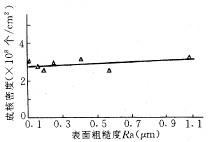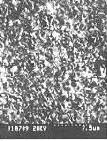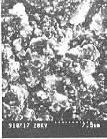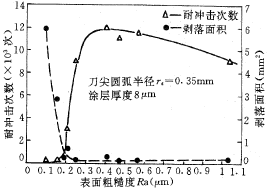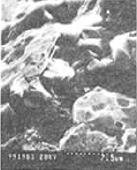1 Effect of surface roughness on nucleation density and nucleation state
|
In order to study the influence of the surface roughness of the tool base on the nucleation density, we carried out experimental research on the substrate ground with different particle size diamond powder. In order to avoid the influence of Co element on nucleation in WC-Co cemented carbide, we carried out the deposition experiment by flame method using metal W as the matrix. The experimental conditions were as follows: the reaction gas flow ratio O 2 /C 2 H 2 =1, the substrate temperature was about 750 ° C, and the deposition time was 3 min. According to the results of scanning electron microscope observation, the relationship between the surface roughness of the substrate and the nucleation density of the diamond film is shown in Fig. 1.
It can be seen from the figure that when W is used as the matrix, the surface roughness of the substrate does not have much influence on the nucleation density of the diamond film. Under the above deposition conditions, the nucleation density can reach about 3×10 8 /cm 3 . The same trend has been shown in the study of WC-6%Co cemented carbide. This is different from the experimental results of deposition on a single crystal Si wafer. It can be considered that a large number of grain boundary defects existing in W and WC-6% Co cemented carbide promote the nucleation of the diamond film, so that the influence on the nucleation density caused by the difference in surface roughness of the substrate becomes less obvious.
|
|
|
| Figure 2: Nucleation state of diamond on the surface of different roughness substrates | ||
Further observation and analysis by scanning electron microscope showed that the surface roughness of the substrate had a great influence on the nucleation state of the diamond film. Figure 2 is a graph showing the nucleation anti-grain growth state of diamond when a continuous film is formed for 2 min on the surface of a substrate having different roughness. It can be seen from the figure that on the surface of the smoother substrate with Ra 0.19 μm, the diamond film is relatively flat, and the contact between the diamond film and the substrate is limited to the vicinity of the nucleation point, which can be approximated as a two-dimensional contact, and the actual contact area is small. On the rough surface of Ra 0.41μm and Ra1.04μm, diamond has nucleation in the peaks and valleys. Since the diamond grains grow in three dimensions, the diamond grains nucleated in the valley after forming the continuous film The three-dimensional contact of the substrate causes the actual contact area between the bottom surface of the diamond film and the substrate to be significantly increased, thereby contributing to the improvement of the adhesion strength between the diamond film and the substrate. However, at Ra 1.04 μm, since the surface of the substrate is too rough, the valleys between the peaks are deep, and holes are easily formed in the valleys after the diamond grains are further grown to form a continuous film.
2 Influence of surface roughness of tool base on adhesion strength
In order to further study the influence of the surface roughness of the tool base on the adhesion strength, we have prepared a diamond film coated tool with different surface roughness of the substrate by the flame method. Since the binder phase Co in the WC-Co cemented carbide promoted the formation of graphite at the initial stage of deposition, in order to eliminate the influence, the metal W was selected as the base material of the diamond film coated cutter.
Due to the difficulty in quantitative determination of diamond and matrix adhesion strength, the most widely used method is the indentation observation method, that is, the indenter is pressed into the diamond film with a certain pressure by a Rockwell hardness tester, and the adhesion strength is qualitatively compared according to the size of the peeling area of ​​the film. size. Taking into account the practical application of diamond film coating tools, we used the method of intermittently turning the workpiece to evaluate the adhesion strength. That is, under certain cutting conditions, the diamond-coated tool was used for the intermittent turning experiment, and the adhesion strength of different diamond film-coated tools was evaluated by the number of impact resistance and the peeling area of ​​the film when the diamond film was peeled off. The experimental conditions for intermittent turning are shown in the attached table.
| |||||||||||
|
| ||||||||||
The LY12 was subjected to intermittent turning test under the cutting conditions shown in the attached table. The relationship between the surface roughness of the substrate and the number of impact resistance of the diamond film coating tool and the peeling area of ​​the film is shown in Fig. 3. It can be seen from the figure that as the surface roughness of the tool base increases, the number of impact resistance of the diamond film coated tool increases significantly when the film peels off, and the peeling area of ​​the film is greatly reduced, indicating that the diamond film and the tool base are between The adhesion strength increases remarkably with the increase of the surface roughness value of the substrate, which can fully meet the requirements of actual cutting processing. It can also be seen from the figure that when the surface of the substrate is too rough, the adhesion strength tends to decrease.
Scanning electron microscopy was used to observe the surface of the diamond film after peeling. The results show that there is almost no diamond grain residue on the smooth surface of the substrate; many diamond grains remain in the grooves and holes of the rough surface. Figure 4 shows. It can be considered that on the surface of the rough substrate, not only the contact area of ​​the diamond film with the substrate is large, but also the diamond grains embedded in the grooves and holes in the rough surface establish a mechanical lock cooperation between the diamond film and the substrate, thereby The adhesion strength has been significantly improved. When the surface of the substrate is too rough, the adhesion strength is lowered due to the easy formation of voids between the diamond film and the substrate.
3 Conclusion
When the diamond film is deposited on the W and WC-Co cemented carbide substrates, the surface roughness of the substrate does not have much influence on the nucleation density, but has a great influence on the contact state between the film and the substrate. The rougher tool base surface not only increases the actual contact area between the diamond film and the substrate, but also establishes a mechanical lock cooperation with the macroscopic effect between the diamond film and the substrate, so that the adhesion strength of the diamond film coated tool is significantly improved. . When the surface of the substrate is too rough, the adhesion strength will be lowered between the surface of the substrate and the diamond film due to the presence of voids. Reasonable design of the surface roughness of the tool base is an effective means to improve the adhesion strength of the diamond film coating tool.
LED Therapy Light catalogue, include all therapy light, such as LED Therapy Light High Power, Therapy Light Lamp Panel,More Lamps For Light Therapy.normal wavelength is 660nm$850nm, led arrangement can be customized by your requirements.
High power therapy lamp:300w, 500w ,1000w
More Therapy:45W,60W,200W,300W.
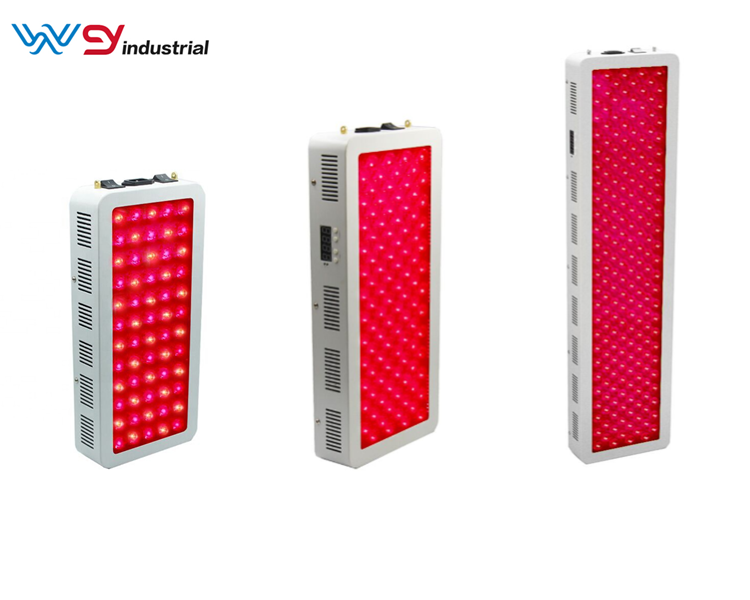
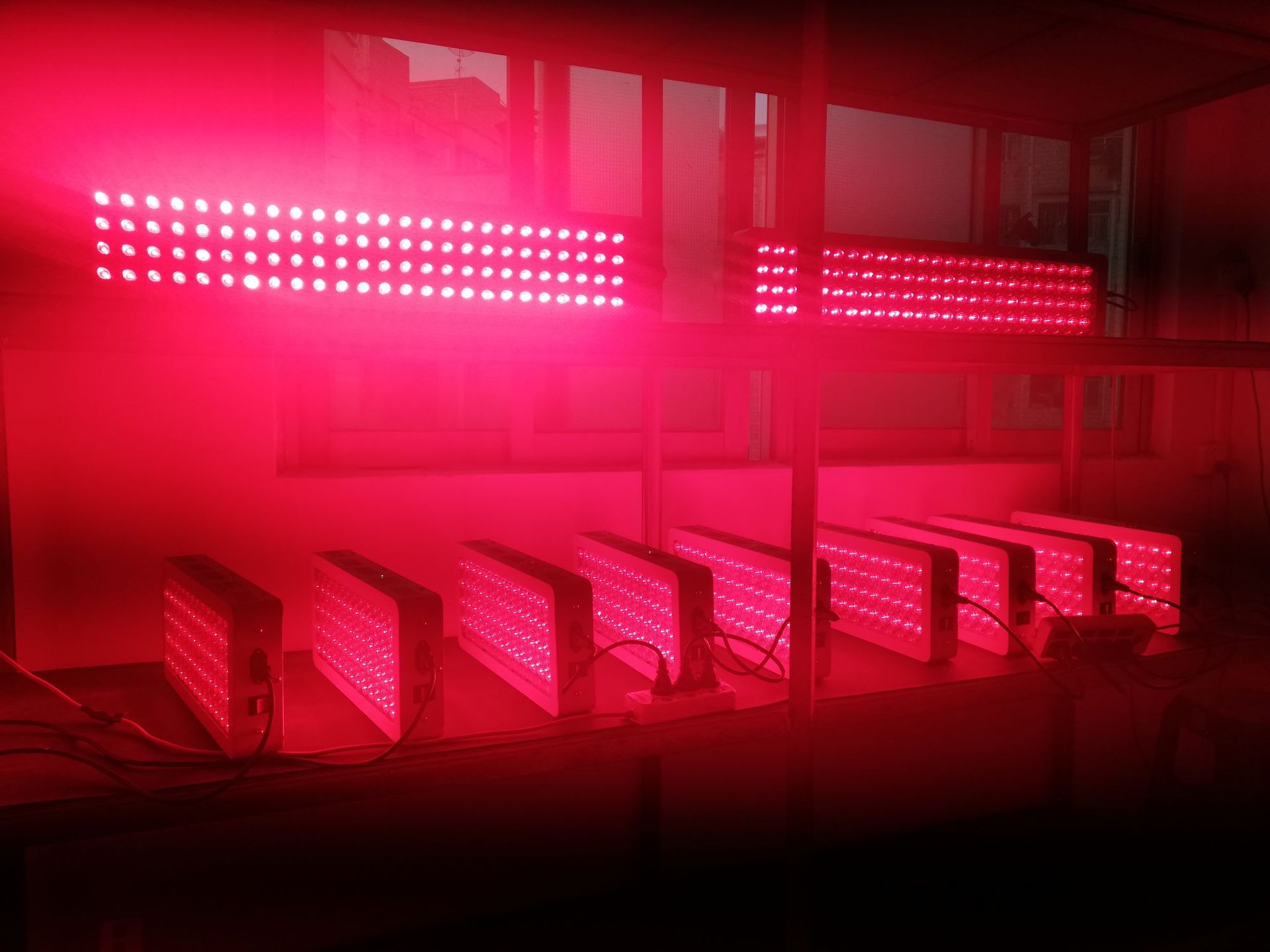
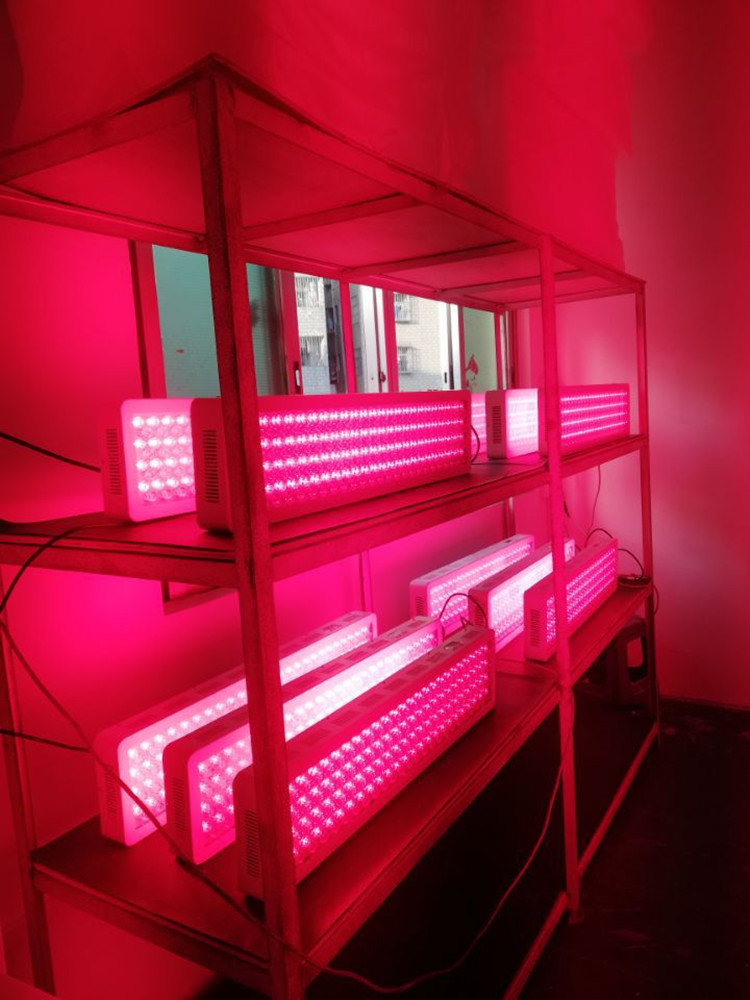
Led Light Therapy,Led Light Treatment,Led Therapy Benefits,Led Therapy Machine
Shenzhen Wenyi Lighting Technology Co., Ltd , https://www.szwenyigrow.com
